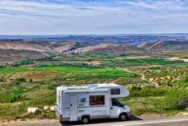
Feeling Hot Hot Hot: Solar Cooking in Action
Cooking can be challenging in itself. Following recipes, getting the right ingredients and hoping it comes out tasting delicious – unless you’re a top class chef, everyone has had a fair few burnt dinners in their time. When you’re off-grid however it’s not just worrying about what it tastes like, but how to cook the food in the first place!
Harvesting the power of the sun for cooking has been a practice conducted for many years.
Solar cookers have been on the market since the mid-80s and have become a popular option for safe and easy cooking with no fires or fuel involved. There are obvious benefits to solar cooking, after the initial investment it is a free renewable source of energy. Not only this, but it is seen as a healthier way of cooking without smoke from fires etc.
Solar cookers convert the sun’s rays to infra-red radiation producing heat. Therefore, it is not the sun’s heat itself or the ambient air temperature outside the cooker that causes the food to cook.
There are three main types of solar cooker which can vary in their design and build.
The solar box cooker is derived from a box with reflectors that funnel the sun’s rays into the chamber which contains the food to be cooked. These models can reach very high temperatures, on average between 200-350°F, which is ideal for most baking needs. With a good heat retention and little need for supervision it is perfectly safe to leave food for long periods without fear of burning. Being a box shape these cookers are less likely to tip over and when constructed will have high levels of insulation.
The solar panel cooker on the other hand doesn’t reach temperatures quite as high; between 200-250°F. Essentially the design is a pot or pan within a plastic enclosure, with a 3-5 side reflective panel surrounding it to channel the sun’s rays. This type of design is best for slower longer cooking periods, leaving food very succulent. With no adjustments needed to track the sun, little supervision is needed.
Finally, the solar parabolic cooker can maintain the highest temperatures of the three main types and so can be used for grilling or even frying food. It can cook food much quicker, however usually smaller amounts than what can be held in the box or panel solar cookers. Also more attention is needed when cooking using this model, as the angle and direction of the cooker will need to be changed more frequently to track the sun.
There are many plans and designs for you to try if you want to have a go at a DIY solar cooker. Many designs include using materials commonly found around the home or are easily obtainable. For example, cardboard boxes, aluminium foil, black paint, some form of adhesive and even umbrellas!
